What is the Trim?
The internal parts of the valve body, stem, seating material, package, disc, plug, back rings, etc., are collectively referred to as the trim. In other words, all wetted parts which can be removable and replaceable in the valve body are part of the control valve trim.
The valve body, a bonnet that comes in contact with process liquids is not considered as trims.
Valve components such as back seals, O-rings, bushings, packings, etc., vary with the type of valve such as Ball valve, globe valve, butterfly valve, etc. Characterized Ball valves are available for better throttling applications in liquid service control applications.
Few general terms connected to a control valve trim are as follows.
Disc
Type of the disc defines the name of the valve such as a gate valve, ball, and needle valve.
Plug
Equal percentage, linear, and quick opening.
Cage
It is a part of a valve trim that surrounds the closure member and may provide flow characterization. Cage may also contribute to guiding, balance, stability, proper alignment, and facilitate assembly of other parts of the valve trim.
Seat
Gate valve, the ball valve can be seen with two seats one on the upstream and another on the downstream. Globe valve only with one seat.
Stem
Depending upon the valve design, the plug and stem may be a single piece or threaded into the plug. Valve stems are with the same materials as the plug.
Packing
Packing is properly done, to prevent damage to the stem. Poor packing leads to leakages of fluid or gases to happen. If packing is loose, there is a chance for leakage. If it is tight, is hard to move.
Trim selection against Corrosion & Erosion
Choosing a trim material is based on service conditions. The service conditions may include high temperature, pressure, chemical composition, flow velocity, liquids with suspended solids, etc.
There are many corrosion resistance tables, used to determine the sustainability of the material to resist corrosion. The second one is erosion, a material that can withstand corrosion may not be suitable for erosion issues.
Erosion is caused by high-velocity liquids with abrasive particles harder than trim material.
Metallic Trim Material
Most common trim material is AISI type 316 stainless steel. The metallic trim is good for all-round choice in general service for about -195 Deg C to +400 Deg C and moderately corrosive fluids. Alloys of steel, titanium.
Cobalt-Chromium alloys, Nickel-Boron alloys. Cobalt coated ball valves to overcome corrosion and erosion.
Non-metallic Trim Material
Operating temperature is most important in selecting nonmetallic trim material. Poly tetra fluoro ethylene (PTFE), Teflon, etc.
Anti-cavitation and Noise Trim
One of the reasons for noise generation in control valves is a result of cavitation. Control valves with anti-cavitation trim can overcome the problems in water service applications. Damage done to a control valve by cavitation is a serious issue.
Special Design Trim
Special design Cage guided trims can control cavitation effectively.
Image Courtesy: Emerson
With a multi-step trim design, the pressure decreases in two or more stages thus avert a high-pressure drop in a single stage.
Disadvantage: Anti cavitation valves more chances of plugging in a cage leads to a flow stoppage.
Types of Control Valve Trim
In a control valve, the trim shape determines the flow characteristics of a valve. The control valve manufacturers furnish three types of control valve trims with inherent characteristics.
The relation between volumetric flows versus the percentage of opening with an equal percentage, linear and quick opening can be seen in the below figure.
Linear and equal percentage trims are designed to throttle essentially across the full valve travel. Whereas quick opening characteristics are for maximum flow for little opening.
Trim Chart
Standard, API- 600 chart provides details about each component given in the table below.
Trim types such as seat, disc, back seat, and stem are grouped together and assigned one number. By selecting that number provides the material grade of each component. Up to trim number 5 is furnished in the above table.
Read Next
- What is Stop Check valve ?
- Metal Seated Valves
- Globe Valve vs Gate Valve
- Control Valve characteristics
- Valves Pressure Loss
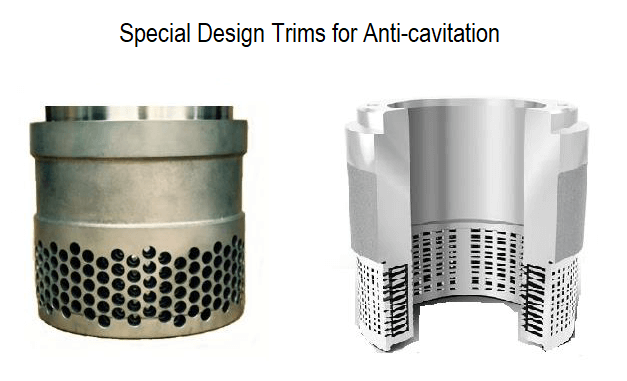
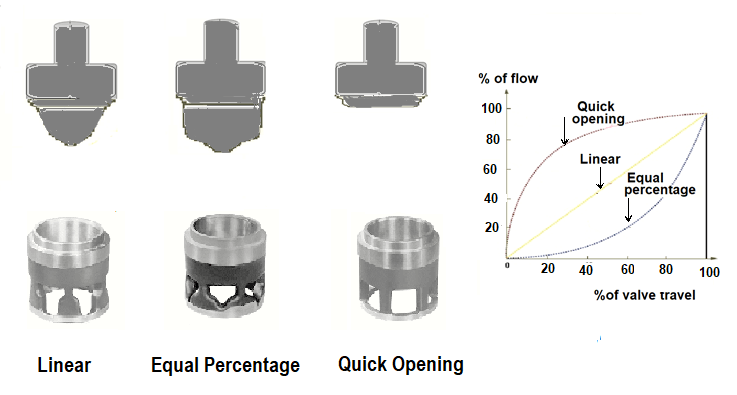
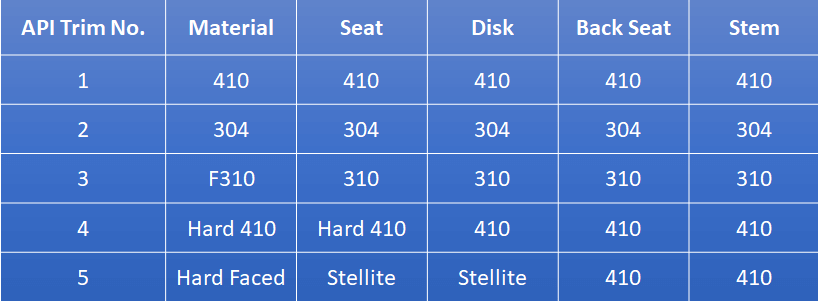
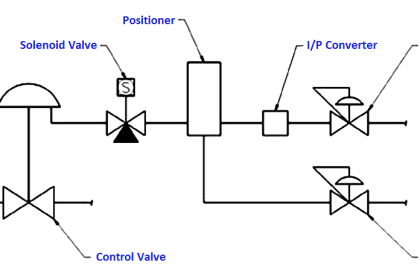
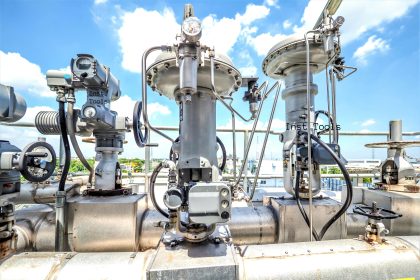
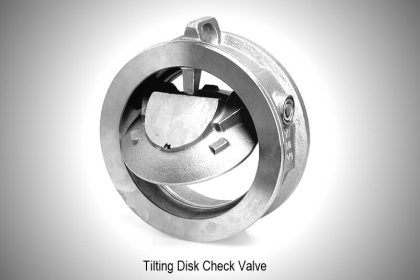
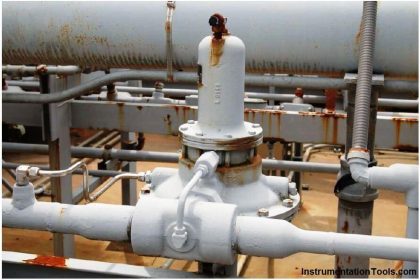
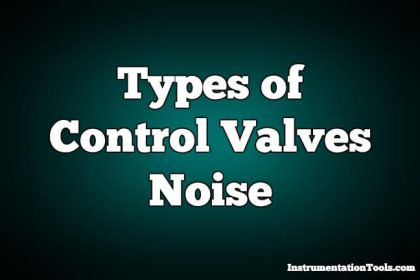
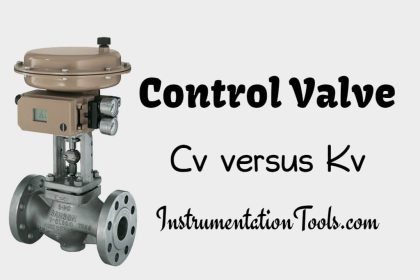

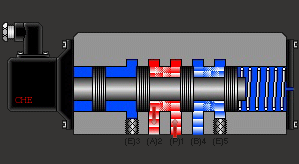

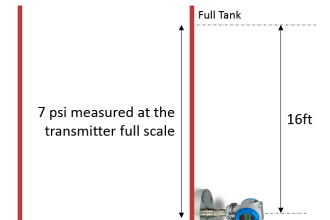
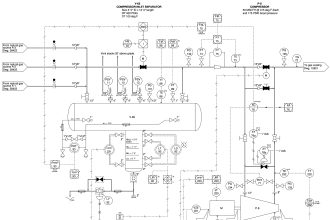

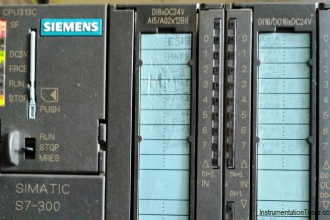
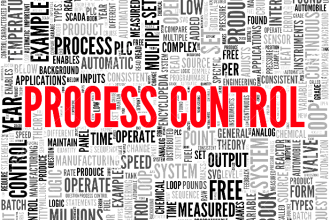

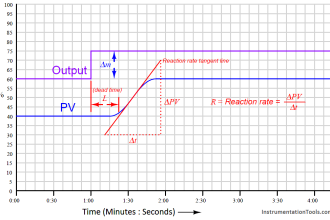

what parametrs do we change to increase response of positioner ( make Siemens model Sipart PS2 ).
regards
Hi, Plz try the following
1. Increase the Air supply pressure within its applicable limits.
2. Do Maintenance for Spool valve
3. Check for any leakages and actuator response also.
4. Try different valve characteristics options